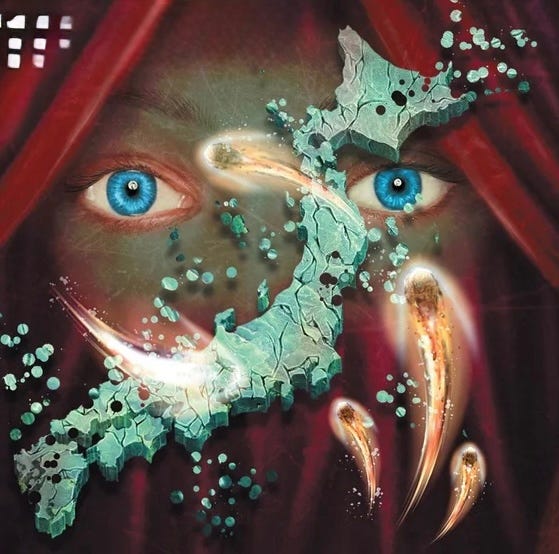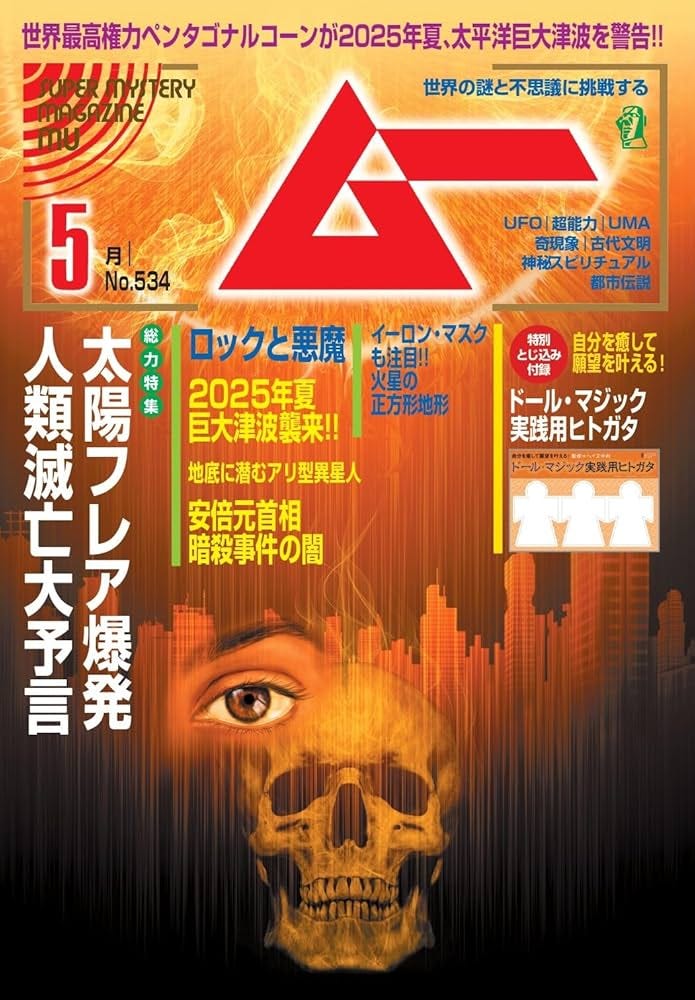Chemtrails over Kyoto
What stops conspiracies from hijacking the conversation in Japan?
A few weeks back I was in Kyoto for Bitsummit, the annual event for indie game developers, and took a taxi from my hotel to the venue. Along the way, I used the reporter’s trick of asking a cabbie for his thoughts. We bantered about the hordes of tourists that have profoundly transformed the vibe of the city, and I was surprised to hear that locals, despite all of the strain on their sights and services, seemed to be taking it all in stride. But an even bigger surprise was to come, when the driver asked where I was from.
“America,” I replied.
“Ah, so you have the same problem we do,” said the cabbie.
“What”s that?”
He gestured vaguely upward and out the window. I peered upwards. The only thing I could see was blue sky, crisscrossed by jet contrails cottoning out far above.
“Chemtrails,” he continued. “They’re everywhere. Full of chemicals. They’re spraying them on us. It’s terrible. They’re even controlling the weather.”
“Who?” I asked.
“All these typhoons start down in the Pacific near China, but they only hit the Philippines and Taiwan and Japan. Don’t you think it’s suspicious? Someone in the States just passed a law against weather manipulation. I wish our leaders took this stuff more seriously…”
A Marjorie Taylor Greene fan, right here in the spiritual heart of Japan. Who’d have thought it? But it reminded me that magical thinking isn’t limited to the ranks of America’s current leadership.
If that’s the case, though, what keeps conspiracy theorists from hijacking the conversation in Japan, as they have in so many other countries? In 2020 and 2021, I wrote about this in a series of essays for The New York Times and The New Yorker that centered on the question of how and why Qanon failed to gain much traction in Japan.
The biggest change since then is, unsurprisingly, social media. It has rapidly become the preferred source of information for many Japanese citizens, young ones in particular. Last week, the Nikkei Shimbun reported that, in the lead-up to the parliamentary elections earlier this month, YouTube searches for political party names actually outpaced those of traditional news sources for the first time. The far right “Japanese first” party Sanseito’s disturbing success at the polls was due in no small part to its strong presence on YouTube. This allowed it to punch far above its weight in connecting with people who don’t (or never did) follow mainstream news.
Way back in 1964, Richard Hofstadter famously wrote about “The Paranoid Style in American Politics.” Japan has its paranoid style, too. Sanseito’s supporters are, according to Asahi Shimbun, “more likely to agree with conspiracy theories,” such as the existence of “secret organizations that exert a strong influence on politics.” So again: what keeps paranoia from sweeping Japanese society in the way that it has the US?
One answer might be found in the pages of Mu, the monthly magazine I mentioned in The New York Times piece. It’s still being published by Gakken, one of Japan’s biggest producers of educational materials (and, for a brief moment in the Eightiers, some pretty awesome toys.) There’s no real equivalent to it in America: a repository for the planet’s conspiracies, psuedoscience, and fringe theories, right there on newstands all over Japan.
In the West the thought of a major educational company also peddling a magazine about Freemasons, aliens, and the occult would probably trigger a scandal. But not here in Japan. It helps that Mu is explicitly apolitical. It deliberately avoids calls to action, even when, say, the fate of humanity supposedly hangs in the balance. It just lays everything out, like: so, hey — this prophecy says we’re doomed. Then it’s merrily on to the next article about kappa sightings or whatever.
Wild stories unfold in its pages — and stay there. This makes it more of an escape from reality than a blueprint for madness. Its readership has included everyone from cult leaders to former prime ministers. And a parody of the magazine plays a role in the hit anime series Dandadan, which seems to suggest it retains a certain relevance among young folks, as well.
I am not a regular or even irregular reader of Mu, but there’s something comforting about seeing its distinctive triangular logo on newsstands every month. It feels like a throwback to a gentler time. I spent many hours of my youth poring over books about UFO abductions and cryptid sightings, or watching shows like Alien Autopsy and The X-Files. I don’t really do this anymore — not because I’ve outgrown them, but because it reminds me how many people posessed of truly crackpot ideas are now in positions of authority in my country. Qanon disappeared in Japan because, removed from its context of the culture wars, it was too absurd to survive any kind of serious scrutiny. In America, Qanon became politics as usual.
But is change on the horizon for Japan? You might think so, from my cab ride beneath the chemtrails, and how Sanseito escaped YouTube to infect parliament, like Sadako escaping her television screen in the movie Ring. But there are reasons to think otherwise.
Sanseito didn’t lean into its conspiracies on the campaign trail — or at least, not the kinds that gained them so much notoriety online, such as anti-vax propaganda or how globalist “Jewish capital” is undermining Japanese democracy. Instead they rallied around time-worn standbys: calls for a return to so-called traditional values, LGBTQ-bashing, and claims of foreigners gaming the Japanese system.
This is obnoxious, infurating stuff, much of it based in easy to debunk exaggerations and falsehoods, should one be predisposed to check. The fact that they resonated with as many people as they did is incredibly concerning. As a well-off American in a well-off area of Tokyo I am more insulated from this hate than many foreign residents. But it is a slippery and steep slope. When an us-versus-them mentality takes hold nobody is truly safe — not even the native Japanese Sanseito claims to put first.
Still: this is an old fashioned playbook, both in terms of content and tactics. Sanseito pivoted away from its crazier claims for a good reason. There remain limits as to how far politicians can get by peddling wild conspiracy theories outside of the realm of social media. At least for now.
And even online, there are surprising pockets of resistance. One of them is none other than Mu. A (very) minor scandal erupted earlier this month when the magazine took the unorthodox step of blocking the personal account of its own editor-in-chief on X. The reason? His retweeting of posts supportive of Sanseito. “I want to slap that account,” posted Mu’s official one. “Don’t associate our name with that stuff.” In a world gone mad, Mu a voice of reason? But perhaps we shouldn’t be surprised; these are experts at containing conspiracies, after all. Perhaps the time to worry is the day the magazine ever stops appearing on newsstands.





Are you familiar with Fortean Times? It is a British Magazine with a focus on the bizarre, folkloric and weird. My Japanese isn't good enough to read Mu, but the covers seem to cover similar topics as FT.
As others have mentioned, The Fortean Times is the western equivalent of Mu. Weirdly, the Fortean Times is quite expensive. I remember being unable to afford a subscription in college.